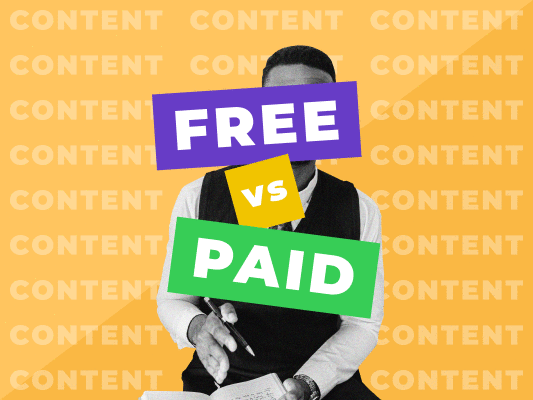We all know what is free and paid content. But for marketers and business owners out there, where do you draw the line when it comes to giving free stuff and asking people to pay?
Free content is what you share in your live videos, podcasts, blog posts, etc. free. You use free content to share examples of what you are offering or teaching as it allows your target audience to connect and relate with you. People can access this type of content without spending a cent.
It is information that you share for free, and it is mostly about the “why” and “what” about what you are solving or teaching others. What do people need to understand, acknowledge or believe before they buy your service or product?
On the other hand, Paid content is the information you offer or plan to share with your audience at a fee, such as an online course or eBook. Instead of just concentrating on the why and what behind your content, paid content brings in the “how” angle.
How will your target audience apply what you are offering or teaching in real life? This is where the ‘how’ comes in by providing a step-by-step and in-depth plan/guide for them to follow. You use this type of content to show that what you promise is achievable.
This means that your target audience must comprehend how your service or product will help them and be able to visualize the possible outcome before they spend a coin.
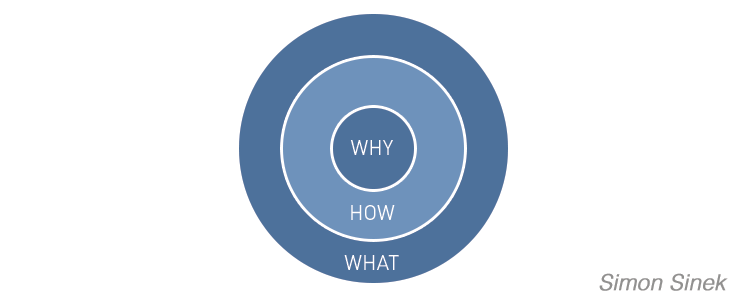
Unlike free content, where you only list ideas and tips, paid content is a complete and detailed guide that can be followed to get actual results.
For instance, if it is a book with chapters and pages, the pages can be your little freebies or tips, while the chapters can be your free mini-courses or podcast episodes.
So, to give away or not to give away? Which is the best approach? This a question that most B2B marketers grapple with. Though everyone agrees that content marketing is at the core of any successful lead generation tactic, some are still not sure about the best approach when it comes to granting access to such content.
For some, the answer is pretty straightforward “paid.” Instead of giving out important content or information for which resources and time were spent for free, most enterprises ask for some form of payment.
This is usually done through a form requesting email addresses or any other personal data. This is an amazing way to drive leads into a sales funnel. Nonetheless, creating a boundary for readers to cross to access your content also has its cons.
The other approach is to give the content for free. Most thought leaders agree that this tactic is excellent for driving traffic and creating a great lead generation campaign strategy.
The problem, however, is that can great content alone triggers users to share their information on their own? This makes it essential to combine both free and paid content.
But how do you determine which parts of your content should be free and which parts should be paid for? What differentiates free content from paid content?
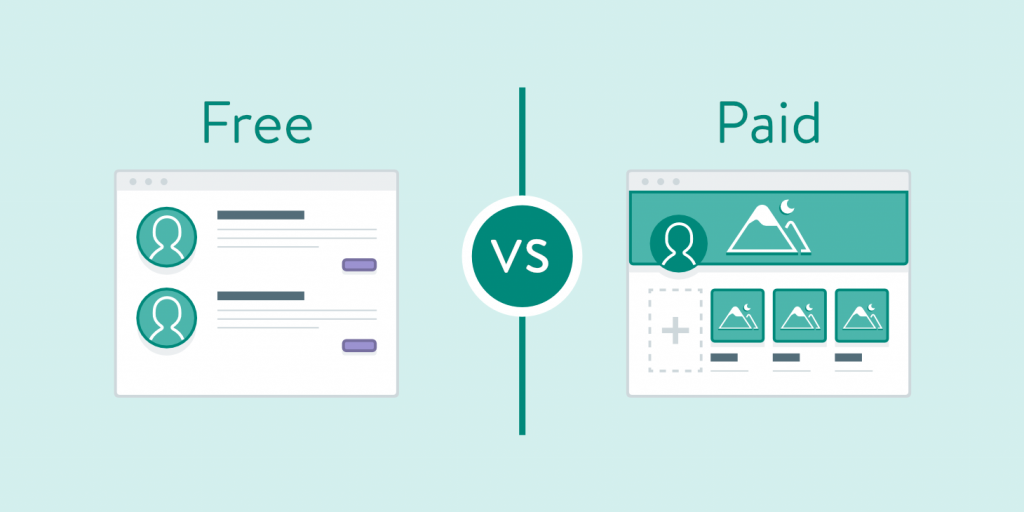
The Balancing Sheet Between Giving It Free and Getting Paid
There is a thin line between paid and free content, and ascertaining if you have crafted a great blog post or crafted part of your next big membership course is not always straightforward. However, some signals for paid and free content can help you make sense of it all.
- A 5-minute podcast is free content, while a 5-hour course is certainly membership grade content.
- Short content usually means less comprehensive content. It gives a broader coverage of a topic instead of detailed steps for implementation or getting details into a solution’s details.
- Free content typically covers the why and what of a solution. It doesn’t talk about the how
- Paid content is more in-depth and can also be customized to a particular section of your target audience or Q&As.
Free Content
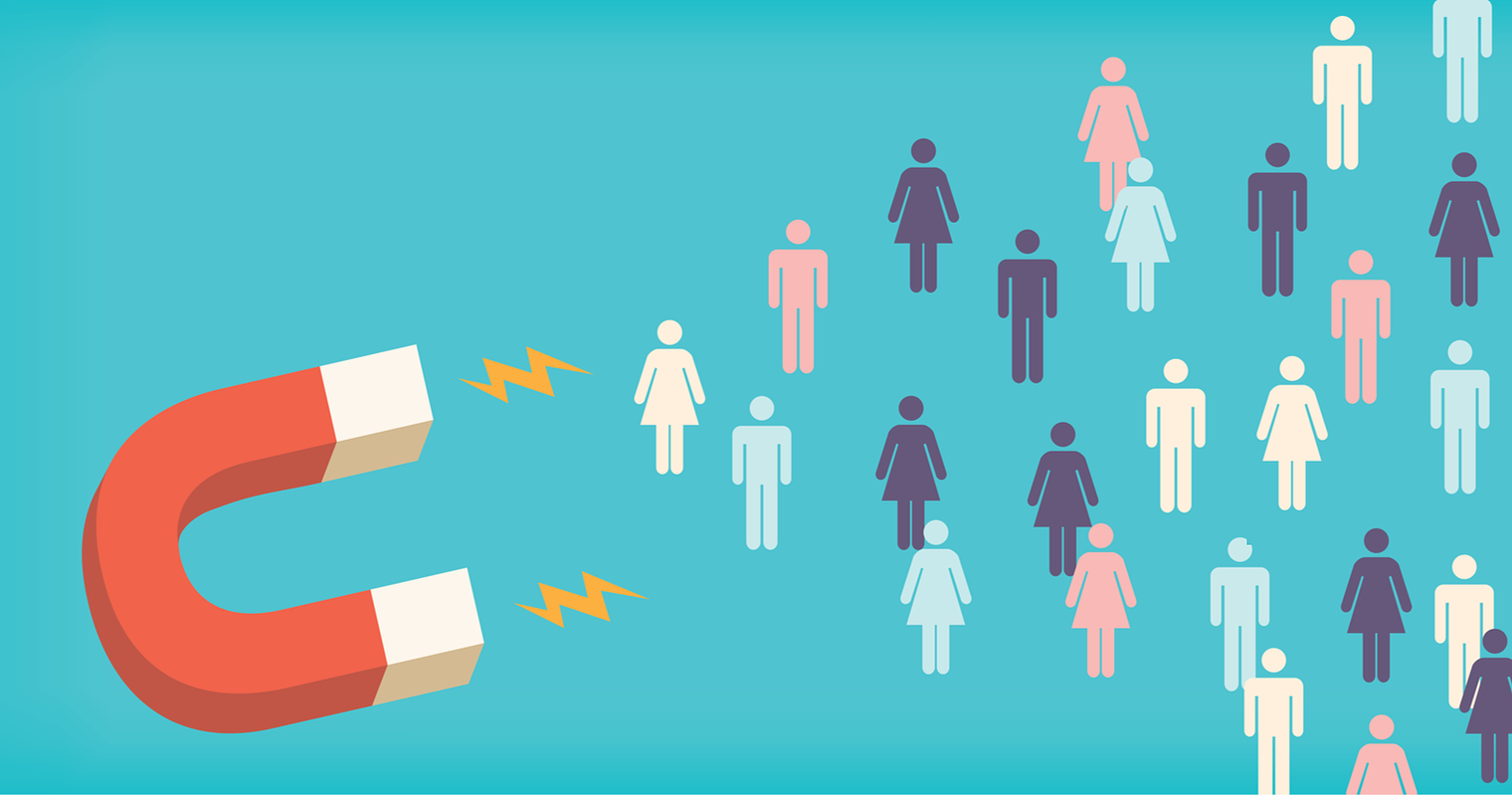
1. Builds Impression and trust
Consumers are tired of greed and waste. As such, it is easy to earn big fat points by offering something useful at no cost. Free content boosts marketing campaigns. Instead of just appealing, do your part and quip prospects and partners with valuable data that inspires.
This way, when the right time comes, and you ask for something, they will remember what you offered them free of charge.
2. Tells you the “what” and “why.”
Free content talks about what a topic is about and why it is crucial. For instance, if an article is about digital marketing, it explains what digital marketing is all about and why you should try it.
It can also go further by telling you things such as “it can help you reach a wider audience than you could through other efforts as well as target people who are more likely to purchase your service or product.”
3. Contents are usually simple.
Your target audience has an issue that you can solve. So, what better way to help them than to educate them about their problems and how your solution can help through engaging content? Just make sure you create content around your client’s most extensive pain areas and then keep it simple and leave the paid version’s comprehensive details.
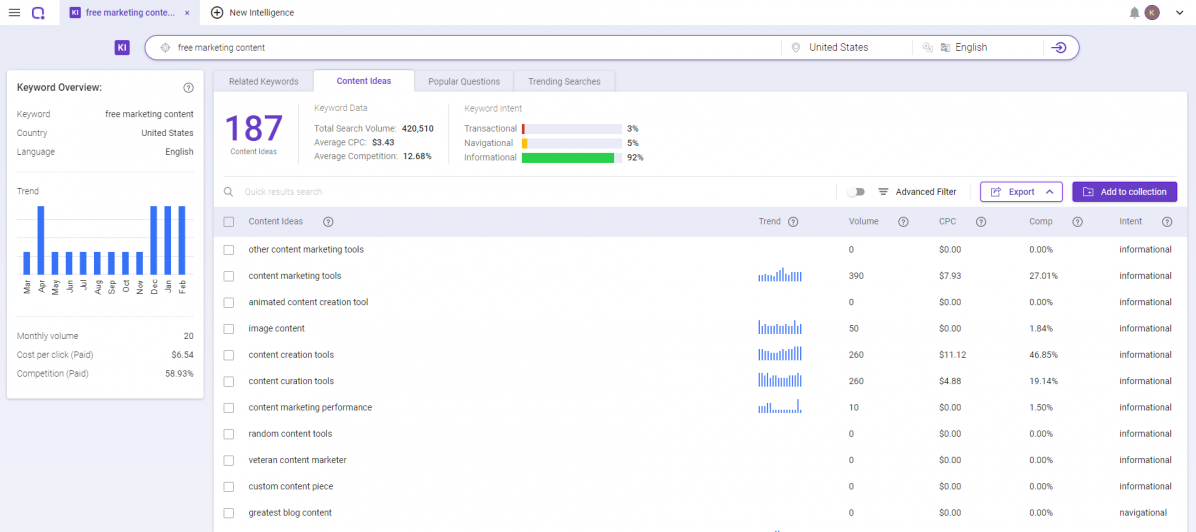
You can use tools like BiQ’s keyword intelligence tool to get content ideas if you are not sure where to start. From performing comprehensive keyword research to helping you discover the best content-driven strategies that are SEO friendly, the tool can help you craft good quality content that actually drives traffic.
4. Contents are ready for anyone and everyone.
Creating informative blog posts that are effective, engaging, and free can help direct more people to your site over time as the content is free and ready for anyone and everyone.
Actually, according to Hubspot, brands that publish at least 16 blogs every month get 3.5x more leads than those that only publish four or lesser posts per month. As such, if you want to improve site traffic, create quality blog posts consistently every month.
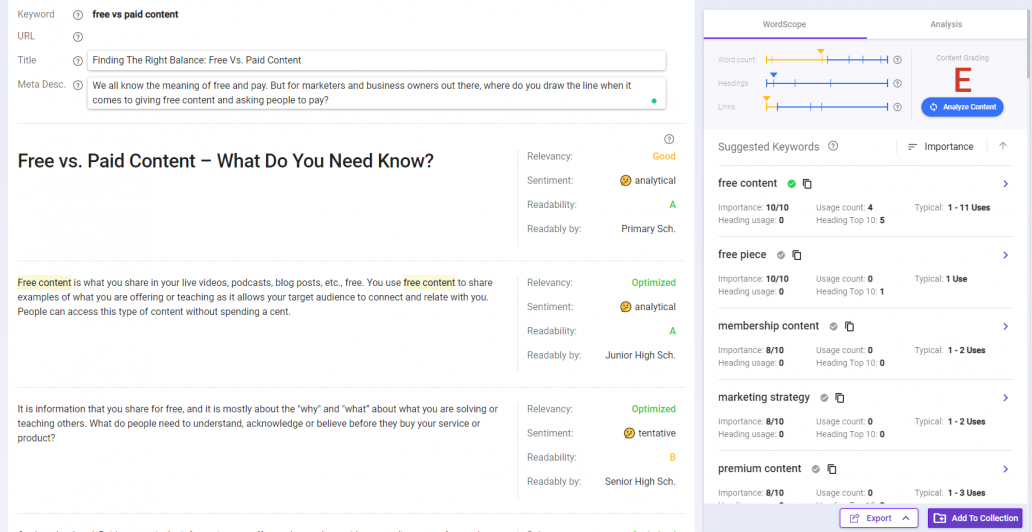
Also, you will get handy writing tips to help you as you type in the real-time text editor in BiQ’s content intelligence tool as well as a ‘content grade’ and keyword count that shows you how relevant your piece is.
5. Act as a form of infotainment.
The term “infotainment” has been prevalent in digital marketing circles of late. But what does it really mean, and why is it important now, particularly when it comes to free content? Infotainment refers to content that is designed to both entertain and informs or educate. It can be in the form of videos, infographics, blogs, reviews, and so on.
The content is meant to be highly engaging and educational. Most marketers struggle with maintaining people’s interests for a long. That is why platforms like YouTube now value the time spent watching a clip than even the video itself.
Free content in the form of infotainment can be used for branding, attracting new leads, and building relationships with your target audience. The secret to crafting infotainment is to be simple and straightforward with your message.
A good example of infotainment is the SciShow on Youtube.
And if the viewers find the videos to be helpful and entertaining, they might just leap towards Patreon or subscribe to their paid exclusive content!
Paid Content

Human beings are bizarre. If you give someone something at no cost, they will be delighted as they can’t believe how lucky they were! However, a few hours later, that excitement is usually gone. The excitement of getting something for free fades, and now they are looking for their next need.
Nonetheless, if you work or save for something and you finally manage to buy it, you will undoubtedly value it more. A good example is Ramit Sethi’s case. Seth is an online entrepreneur who launched a course known as ‘Zero to Launch,’ which was going for $2000 a few years back.
He received tons of requests from family and friends for free access, and being a caring friend, he shared it with them. However, the surprising thing is that none of them finished the course! Why?
Human beings value what they work or pay for. Somebody that is parting with $20 every month to access your content will benefit from it more than somebody who is getting it at no cost.
That’s is what is referred to as sunk cost fallacy. Someone who pays for something is more likely to use it to get their cash’s worth than someone who got it for free,
2. It tells you the “how.”
Unlike free content that gives the ‘why’ and ‘what’ for free, paid content asks customers to pay for the ‘how come’ and ‘how’ part. Paid content deals with how to achieve something, mainly if it is in-depth and detailed. This way, your prospects, and customers will know that you have a good idea of how to achieve something, and you can also do it for them.
And then, just like they people pay musicians to perform for them, your customers will pay you to teach how it works. Some marketers recommend that you scatter some ‘how’ information sometimes in your free blogs to help build trust.
3. Contents are structured and comprehensive.
If your piece is “5 tips to help you lose more than 10kgs within two weeks,” and it is 400 words, honestly, that will not solve the problem completely. 400 words are not enough for you to craft an intricate piece anyone can follow to lose 10kgs in less than 14 days.
The level of depth, structure, and comprehensiveness determines how valuable your content is and a good indicator of whether it should be paid or free.
You can use tools like BiQ’s content intelligence tool to analyze your site and its contents. The tool has a feature known as WordVector that shows your content’s performance against the Top SERP content in relation to your target keyword.
What’s more, it can tell you exactly which paragraph has lesser relevance to the overall content. Then check the “Edit Needed’ section to check which paragraph needs revision.
4. Contents are personalized and convenient.
We all love convenience, and we will pay a premium rate to get it! That’s why quick service, instant access, and fast food are important sales and marketing terms. Research also shows that 44% of consumers pay for great content because it is convenient. It collects all the information they need and combines them into one document.
Technically, when it comes to free content is that you pay for it with some effort. You have to look for it from different sources, filter it and create your own understanding from it. For instance, if you want to learn to Copywrite, you have to find YouTube videos of people explaining what is copywriting or blogs to find copywriting tips.
But the search phrase returns hundreds of results and prompts several questions such as;
- Who do I trust?
- Is this the right level for me?
- Should I really be learning this?

These queries create some form of doubt and require serious effort as well as trial and error to get right. But what if you could sign up for a service like Udemy, where they share a more targeted and structured course?
The site is convenient because you do not have to worry about what works or what you should learn next. All you have to do is log in, watch the tutorial or infographics, and then start practicing.
5. The content is there to educate
When someone is willing to pay for your content, they want to inform or equip themselves with more knowledge. They want to be creative, fitter, and smarter, to change who they are currently into a more refined version.
Nonetheless, some do not know how to make the change. Free content like infotainment only hints at what and why do you need it. It is sporadic to find free content giving the whole picture. For instance, if a tattoo artist wants to learn how to create a peony, they can go to YouTube and try to get something from all the videos on the platform.
The issue, however, is that it requires a lot of hard work, and it is very easy to miss a step in the process. What if you can head to InkWorkshops, take a 10 hr masterclass, and make sure you get all the details you need.
You will also learn from industry leaders and interact with your instructors, which is priceless.
Conclusion
Free vs. paid content is not necessarily about which one is better or more important. It is about knowing which pieces to categorize as paid and what is free. Also, for some, a hybrid approach that blends both types of content makes a lot of sense and fuels the most success.



